The Pyramids & Sphinx – Tips For A Better Visit
When Herodotus visited the Pyramids in the 5th century B.C. they were already 1,600 years old and justifiably famous throughout the ancient world. They were included as one of the Seven Wonders of the World, now usually referred to as the Seven Wonders of the Ancient World to distinguish it from more modern lists. It was truly the first traveler’s bucket list and I have been privileged to have visited six of the seven sites. The seventh is the Hanging Gardens of Babylon in modern day Iraq, so that might take some time and nerve to knock off.
What distinguishes the Pyramids from the six other wonders is that, despite the fact that they are thousands of years older than any other wonder, they are the only ones still in existence. Not only do they still exist, along with the most enigmatic giant statue ever carved, but they continue to be a subject of endless debate about their construction and real purpose. I think that anyone who has ever laid eyes on a picture of the Pyramids and Sphinx must say to himself, “I have to go there.” Certainly I did from the time I was less than ten years old. Recently I had a chance to visit the Pyramids and Sphinx on two separate occasions and came away, not only awestruck, but with some concrete ideas for making a future visit even better. I’m happy to share these ideas with the reader.
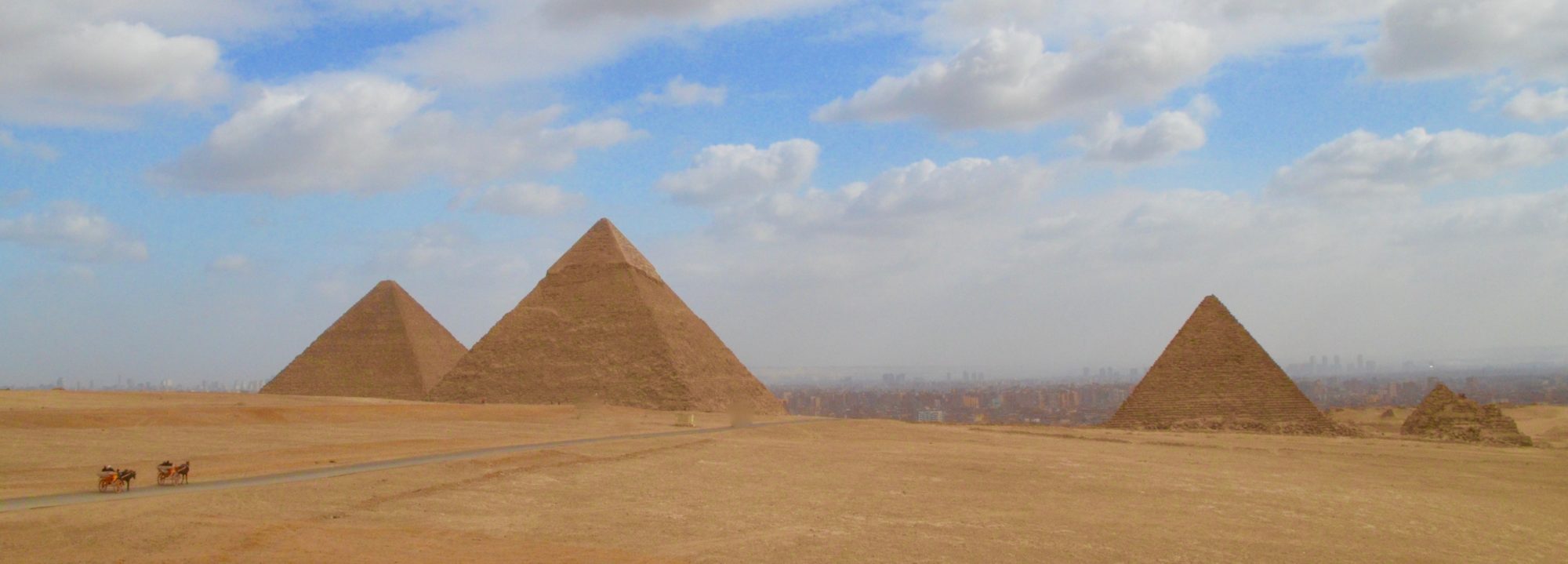
You Can’t See the Pyramids If You Don’t Go
This may seem like a rather specious heading, but the reality is that very few western tourists are going to Egypt these days due to an almost perfect storm of events that has decimated the tourism industry. It started with the violent demonstrations that led to the ouster of long time Egyptian strongman Hosni Mubarak in 2011, continued after the ouster of the Muslim Brotherhood by the military in 2013 and the coup de grace may have been delivered with the downing of the Russian Metrojet over Sinai in late 2015. The amount of tourism revenue dropped by 6o% between 2015 and 2016. To top it off, both the Canadian and U.S. governments recommend against visiting Egypt at this time. Given these events, why would anyone in their right mind want to visit the Pyramids now? Here’s why.
Tourism accounts for the second largest segment of the Egyptian economy after revenue from the Suez Canal. Egypt needs tourism and the hard dollars, euros and pounds that North American and Western European tourists bring with them. The fact that Westerners and in particular, Americans, are very uneasy about visiting a Muslim country has not gone unnoticed in Egypt. Steps have been taken to dramatically increase the security surrounding the airports and all major tourist attractions. The reality is that there have been no terrorist attacks on ancient Egyptian sites for decades and none ever to my knowledge at the Pyramids. The gap between perception and reality is immense, but the discerning traveler should be aware that visiting the Pyramids today is probably safer than it has ever been. By following the next few tips you can make the odds even better for an enjoyable visit.
Stay at the Mena House
In a previous post I gave a number of reasons why I thought that staying at the historic and luxurious Mena House was by far the best option for anyone visiting the Pyramids and Sphinx. Please read it for the details and think about just how great it would be to have a room that has this view of the Pyramids.
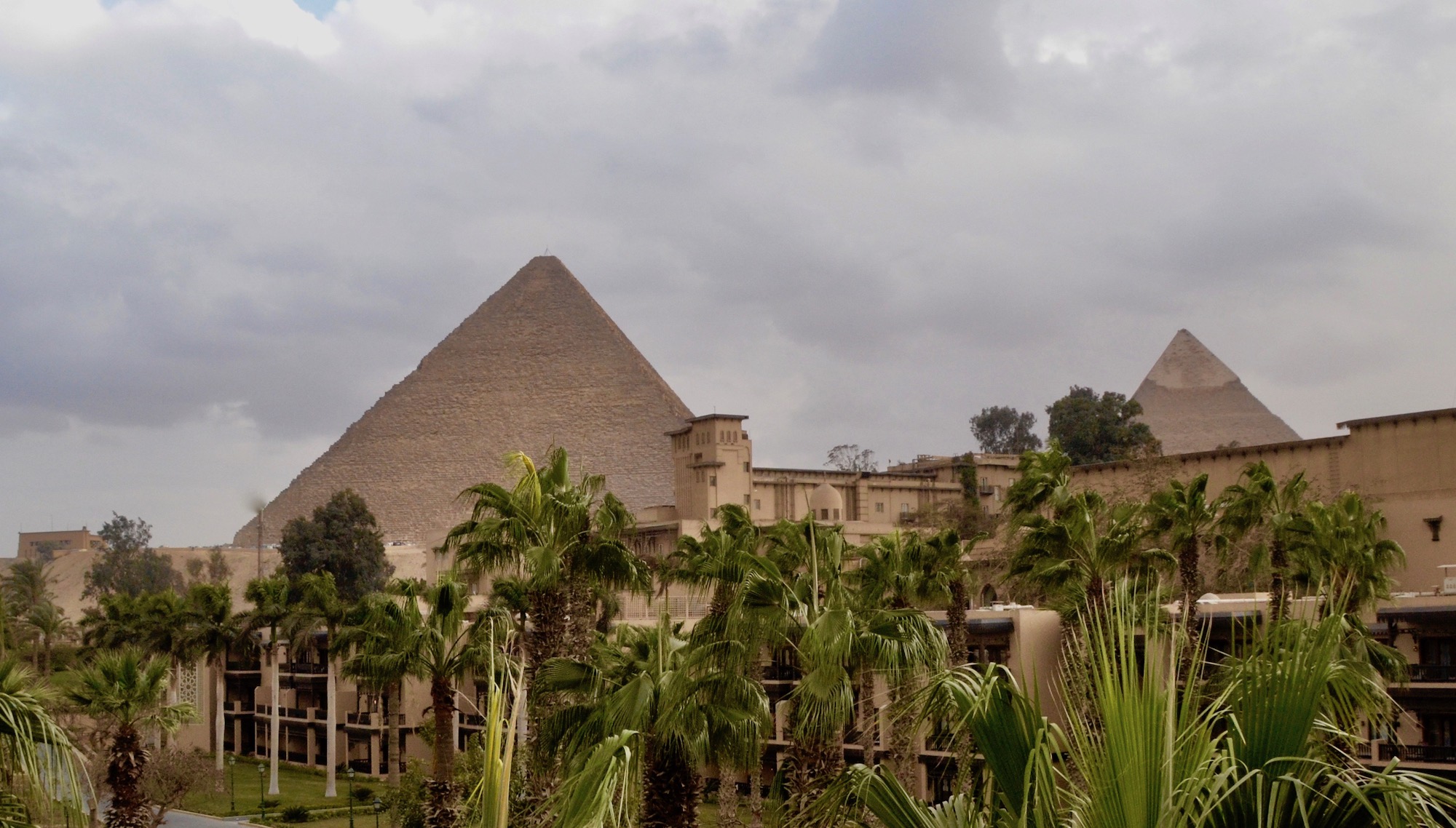
The bottom line is that staying at the proper hotel can make or break a visit to the Pyramids. Sometimes it’s almost as much about returning to a tranquil oasis after visiting a famous place than it is about the visit itself.
Pick the Right Day
While you might think that with the drastic downturn in western visitors there wouldn’t be a lot of people visiting the Pyramids and Sphinx, you would be wrong. The Chinese have not been deterred by security concerns and now make up the vast majority of foreign visitors. On both the times we visited they were there in droves, usually traveling in groups as large as 50 or 60. However, the site is so large that it can easily accommodate a great number of visitors without seeming to be overcrowded.
What can make the difference is if it is an Egyptian holiday or non-school day in which case there may well be thousands of Egyptians on site as well as the foreign visitors. On our first visit, which was during the Egyptian version of school March break, there were so many people that it certainly detracted from the experience, particularly at the Sphinx where the viewing area is relatively small and can get jammed within a sea of humanity. On our second visit, which was not on school break, there were probably only a quarter the number of people as on the first visit and it was a much more pleasant experience. So, in planning your visit, check to see which days are likely to be the least crowded. Probably the best way is to check with the guide that I’m going to recommend that you hire.
Hire a Qualified Guide & Driver
After my first suggestion that you make a point of seeing the Pyramids, this is by far the most important advice I can give for a number of reasons. First of all, the actual site is huge and very few people tour it entirely on foot. That is why there are dozens of Egyptian men on site hawking donkey carts and camels for those who thought they could do it on foot. Typically a vehicle will drop you off at the ticket office which is close to the Great Pyramid and then pick you up to transport you to the pyramids of Khafre and Menakaure. After that you are transported to what is referred to the viewing area where you can get great pictures of all three pyramids. Finally you will get back in and drive a fair distance to the Sphinx. After viewing the Sphinx you exit the grounds nearby, not where you came in. This exit can be absolute pandemonium with a combination of cars, donkey carts, camels, tuk tuks and pedestrians. Having an experienced driver navigate you through this back to your hotel is worth the price alone.
So you definitely need a driver, but can you dispense with a guide and visit the site with say just a guidebook? Absolutely not. Without a guide, before you even get close to the ticket stalls you will be besieged with offers to guide you to the point that if you don’t hire one they will plague you until you give in. You will almost certainly get ripped off by some guy who has very poor English, is not particularly knowledgable about the Pyramids and is most interested in getting you to buy some crappy Chinese made souvenirs at exorbitant prices.
Hiring a guide in advance through a reputable travel service will help dispose of most of the things that can make a visit to the Pyramids a bit of an ordeal. This includes getting the entrance tickets, which are usually included in the price of hiring the guide as well as shooing off the legions of hawkers, camel and donkey ride profferers and scam artists that make their living off gullible tourists. A certified guide will be knowledgable, speak decent if not perfect English (or the language of your preference) and take you to places that it is unlikely you would discover on your own. For example, rather than waiting in line for a long time to enter the Great Pyramid along with dozens of others, our guide suggested going to the Pyramid of Menakaure instead. Here are lines waiting to get into and out of the Great Pyramid.
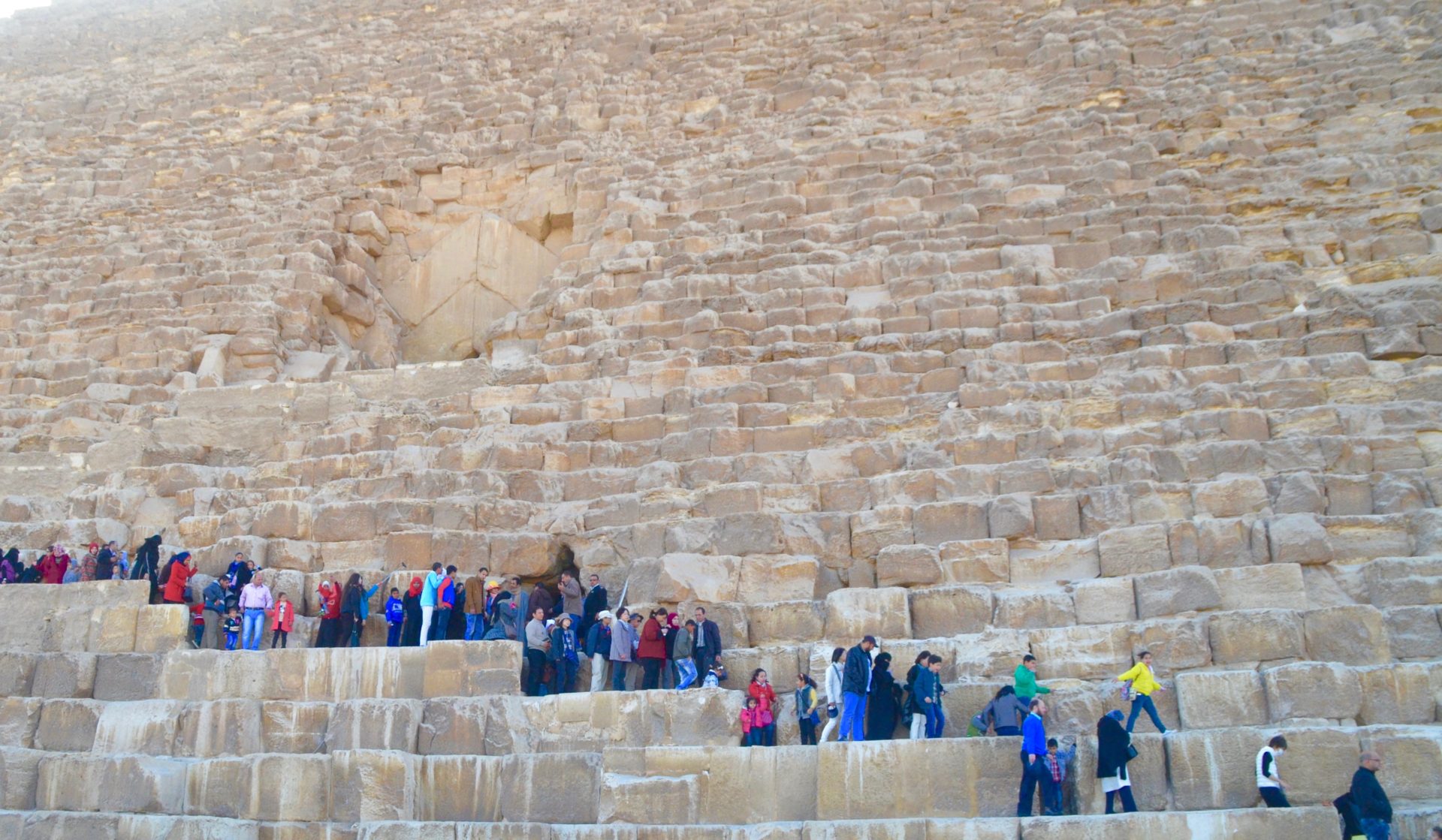
Here is the lineup at Menakaure’s Pyramid. That’s right – just us!
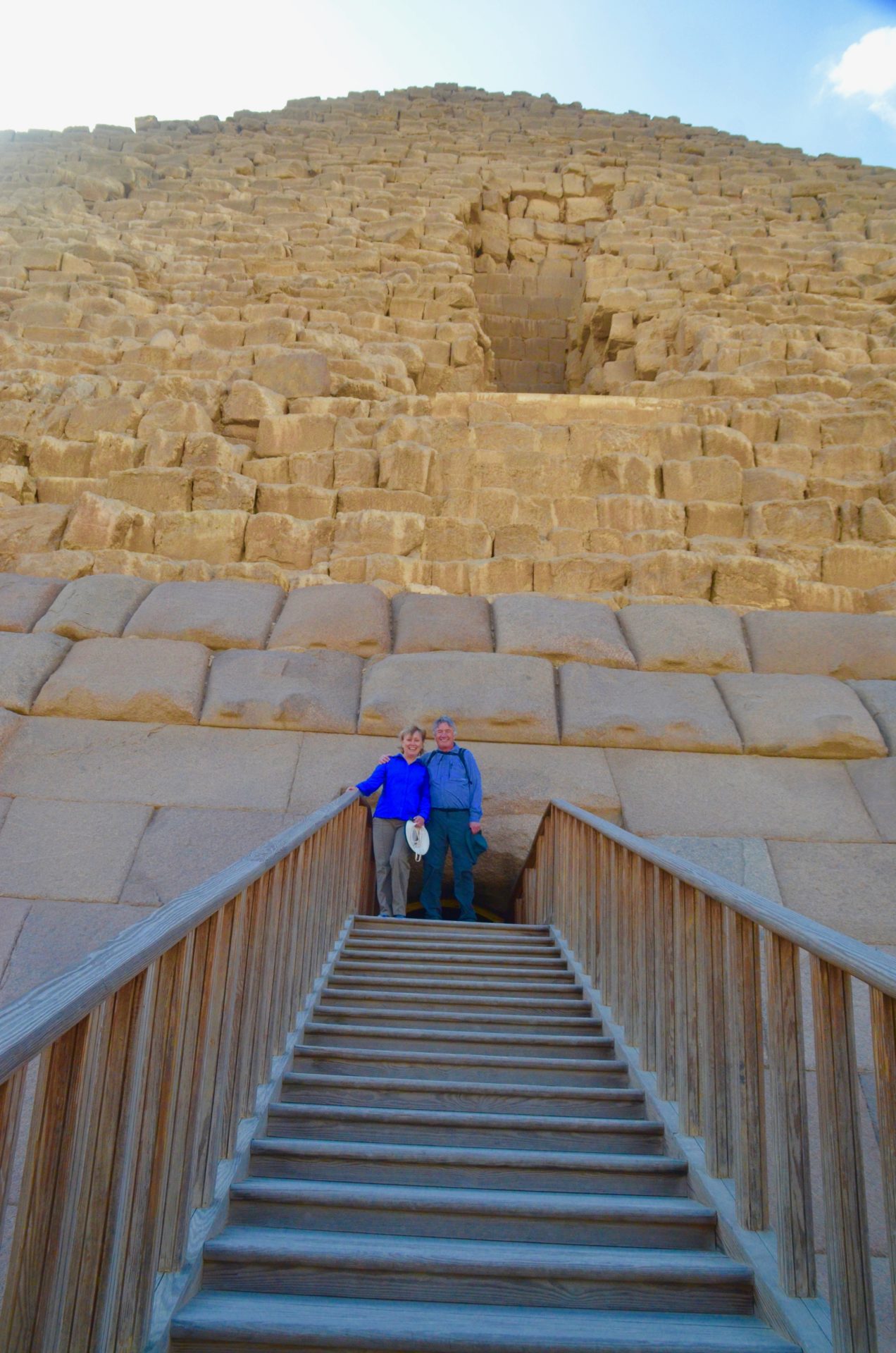
We had the tomb to ourselves and I suspect got a lot better idea of the awe that the first people to enter these tombs must have felt.
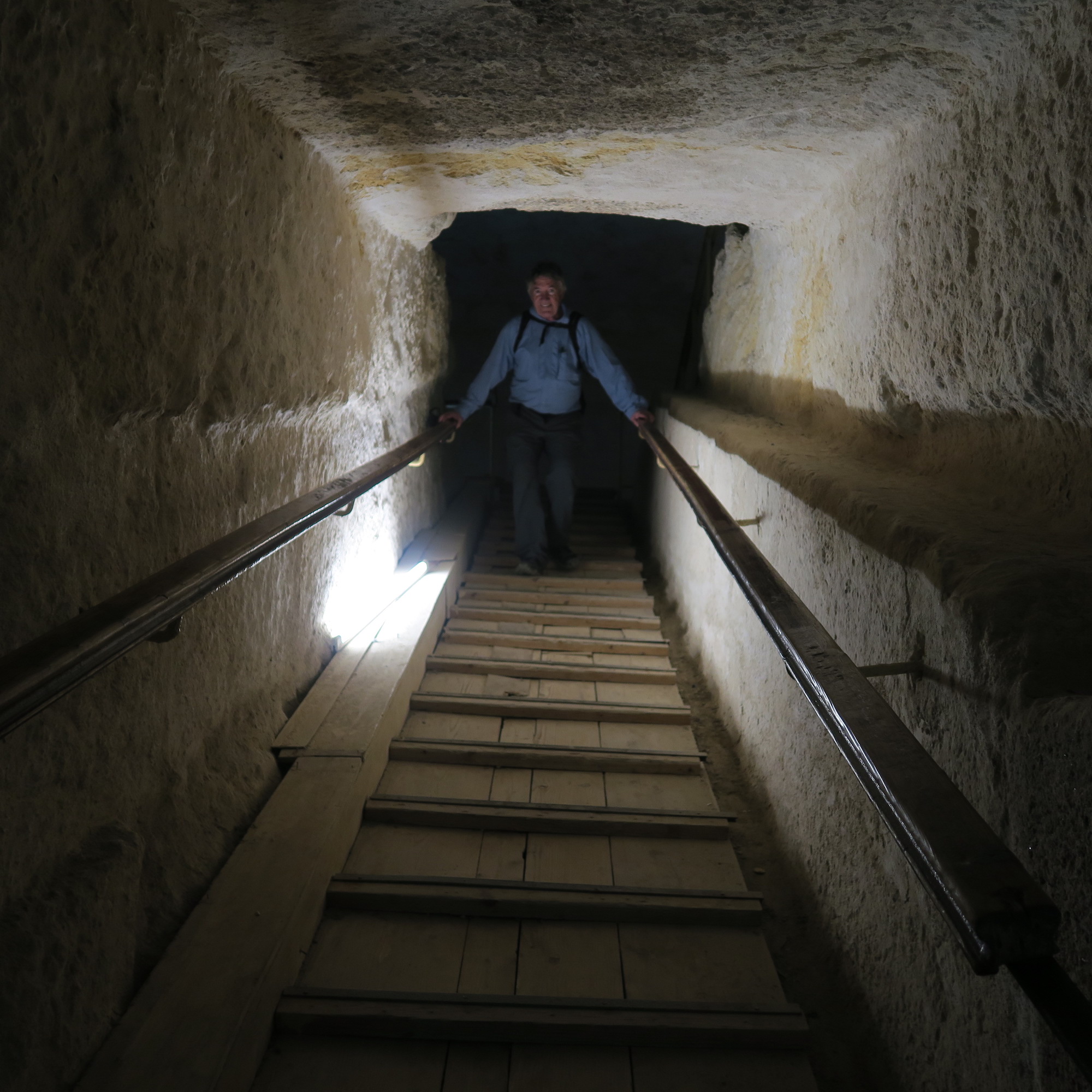
A guide can also act as your photographer. Don’t even think of asking one of the Egyptians just hanging around the Pyramids to take your picture. He will, but you won’t get your camera back without paying him handsomely. Here are some pictures taken by our guide who was quite adept at getting other tourists and locals out of the way so the shots look like we have the place to ourselves. You won’t get these photos with a selfie stick.
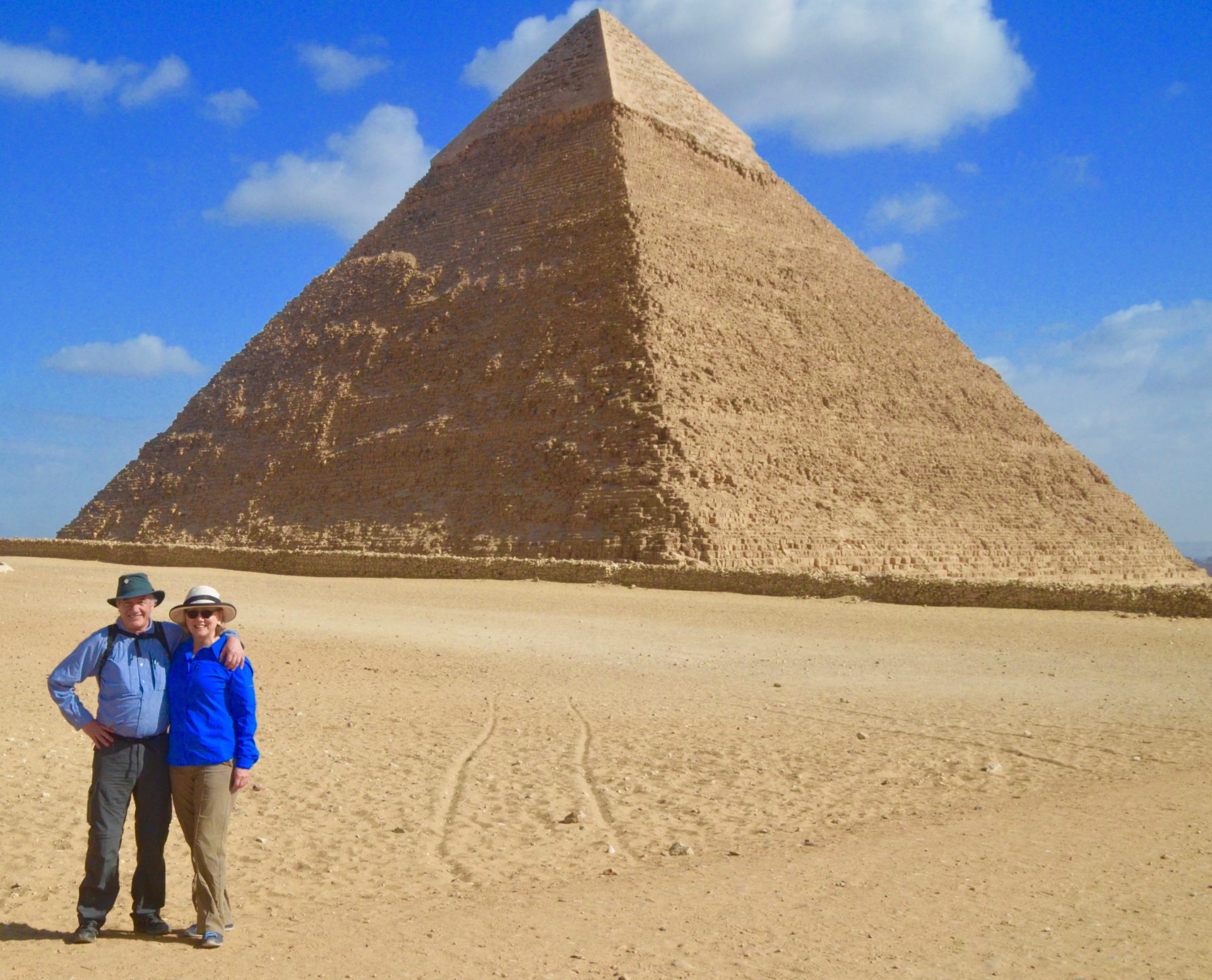
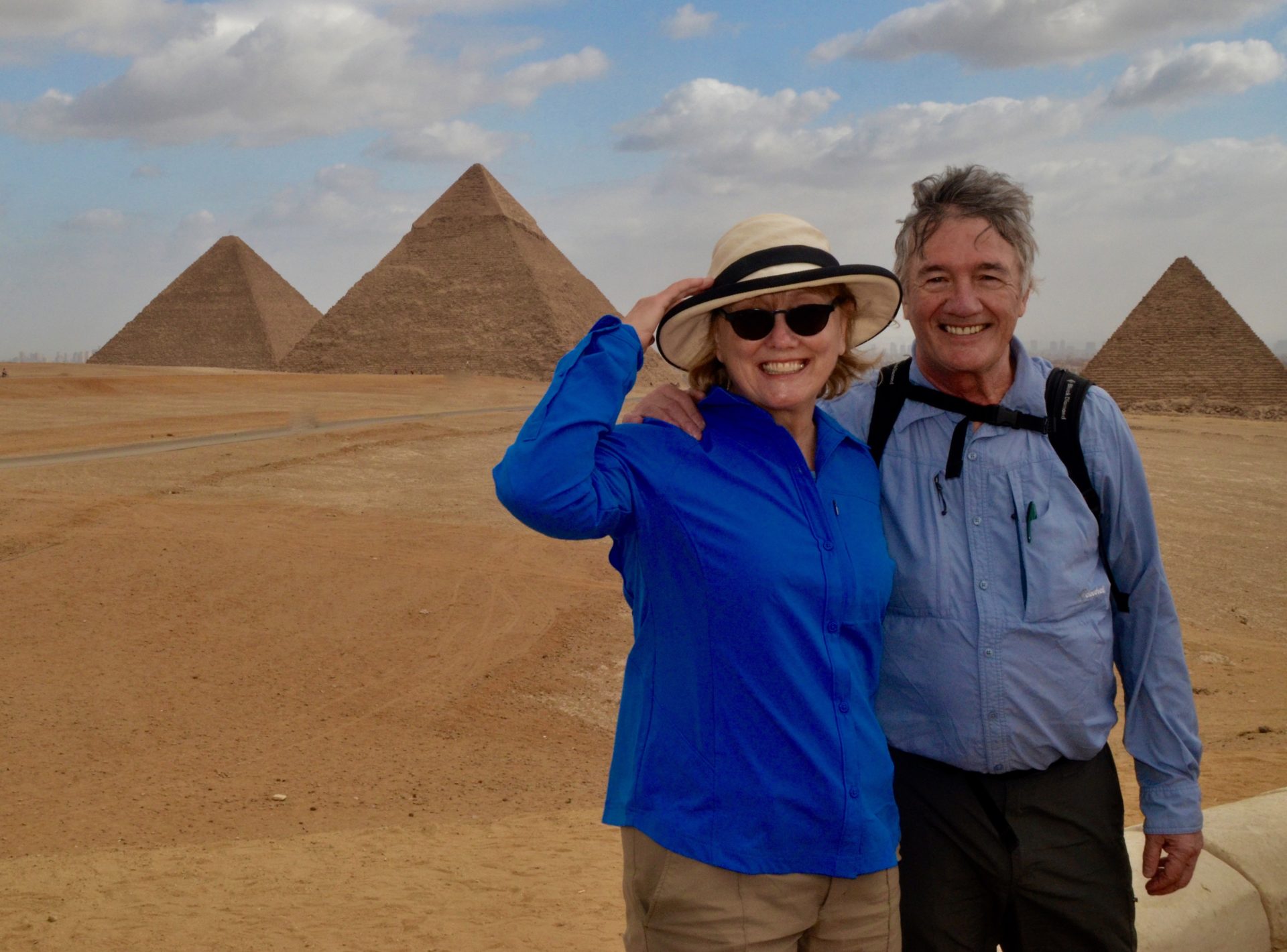
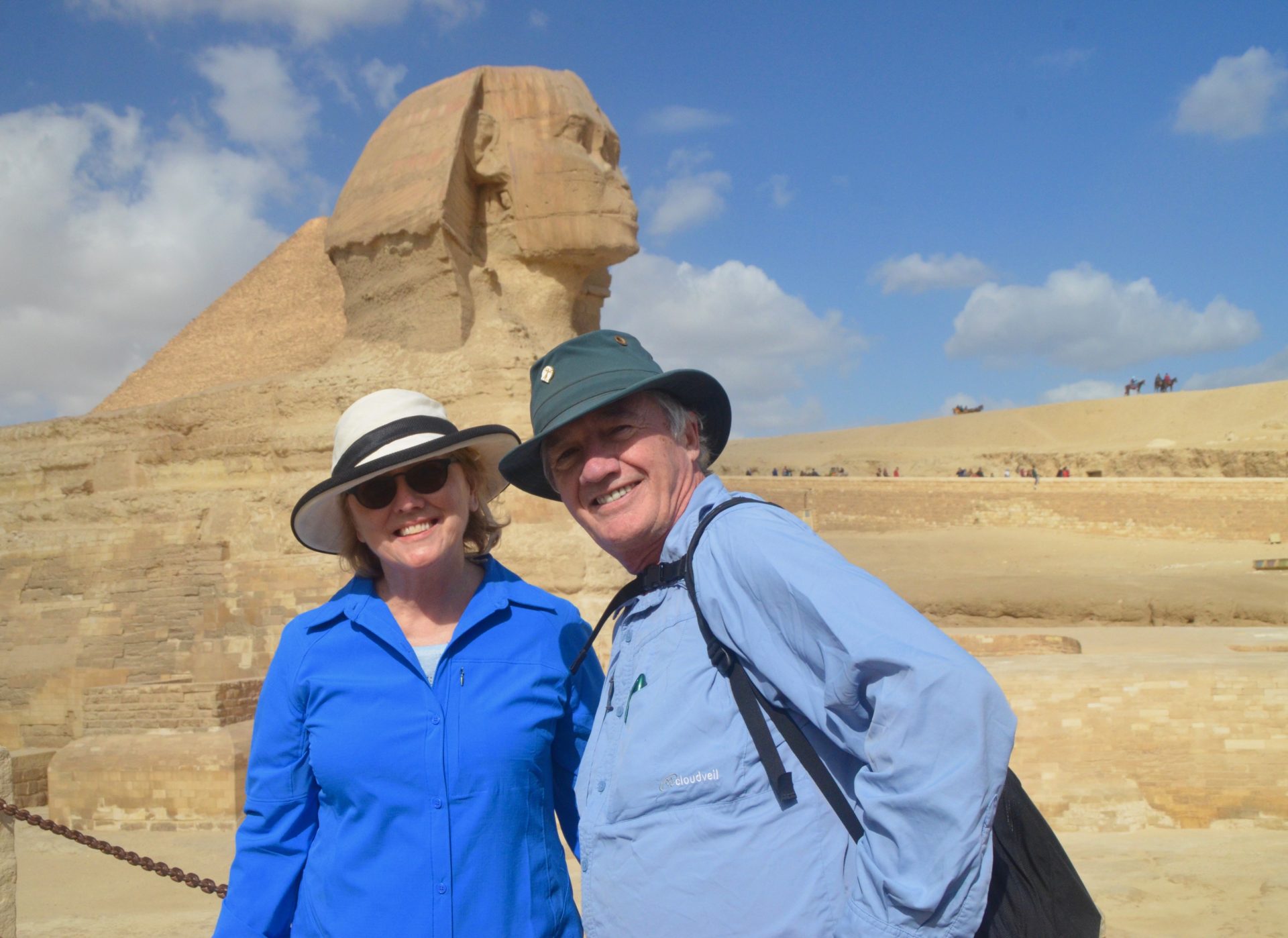
Or the guide can find spots where you take your own photos like this.
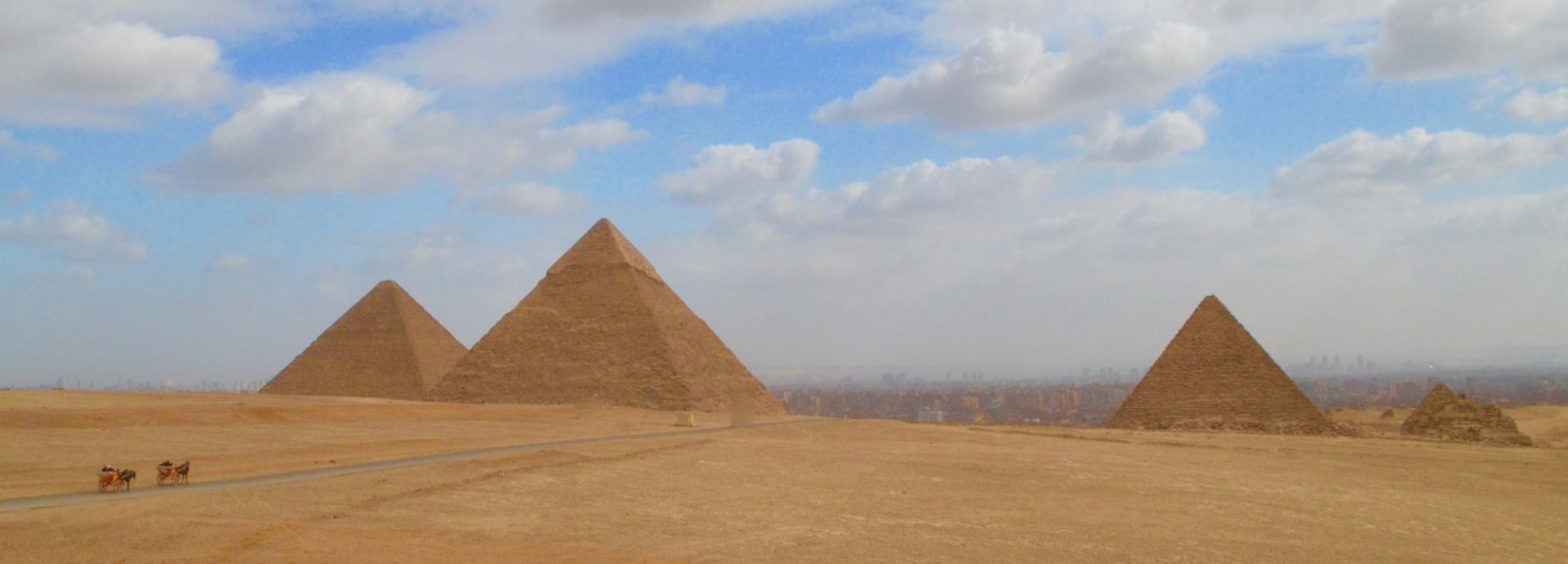
Or this.

Or even this.

What does a driver and guide cost and where can you hire them? For a three hour tour of the Pyramids and Sphinx the cost is $75USD per person, which to me is a fair price. We arranged for our guide, Amira Tawfeek, through the travel desk at the Mena Hotel. Amira did a great job and made our visit even more memorable than it would have been without her.
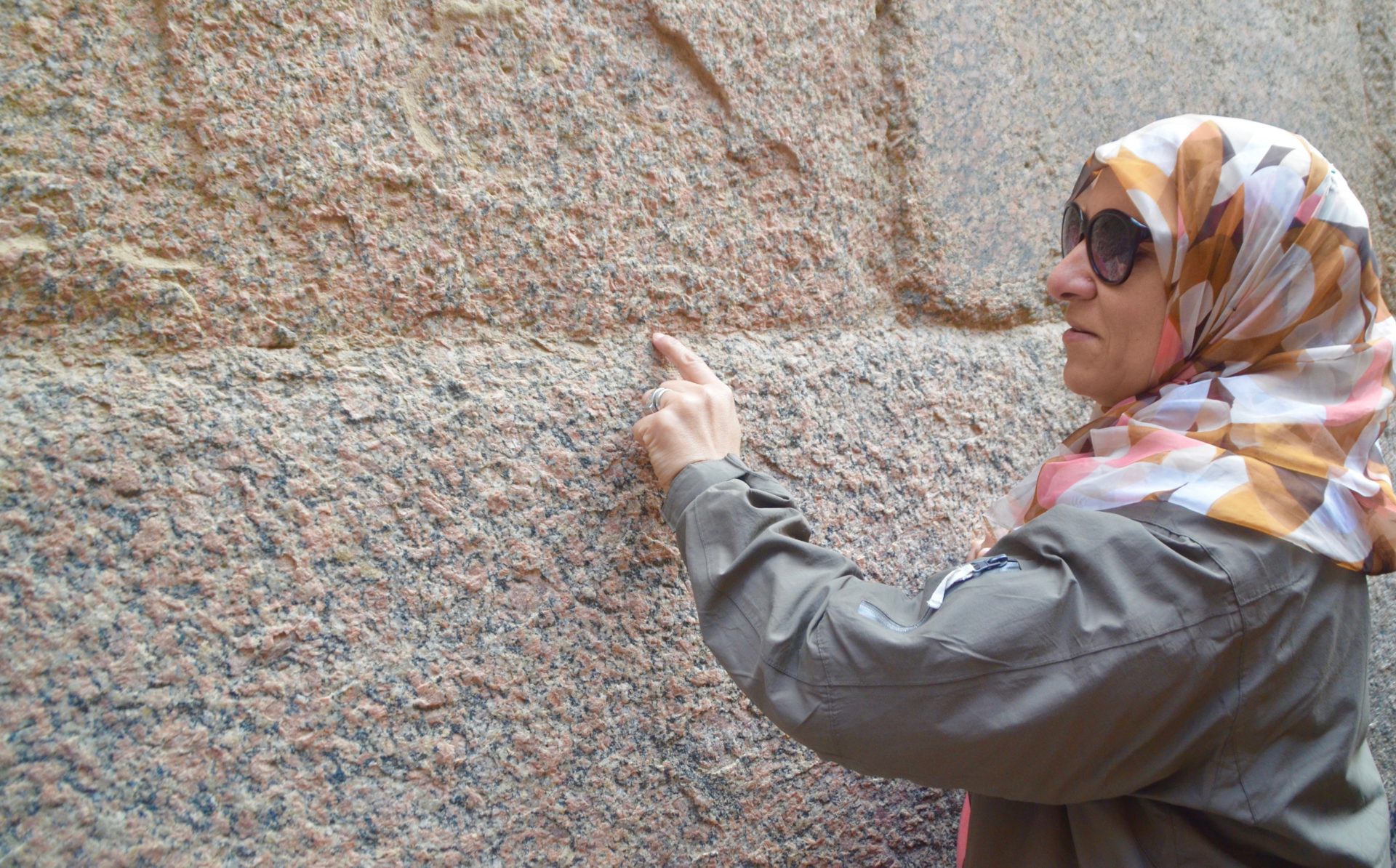
Consider Visiting the Other Pyramids First
A lot of people are unaware that the Pyramids of Giza are not the only pyramids in Egypt. In fact, there are actually eighty known pyramids in Egypt of which the three largest at Giza are considered the culmination of the pyramid building era in early Egyptian history. To get a better appreciation of how and why the pyramids developed as they did, it is best to start your visit, not at Giza, but at nearby Saqqara where the first pyramid was constructed by the pharaoh Djoser. On our first visit to the pyramids we could just make out the Step Pyramid miles away in the distance which kindled a desire to visit it and other nearby pyramids that preceded those at Giza.
I’m not going to turn this post into a history of pyramid building (you’ll get that from your guide), but rather just show photos of the most prominent pyramids not in Giza. This is the very first one, Djoser’s step pyramid.
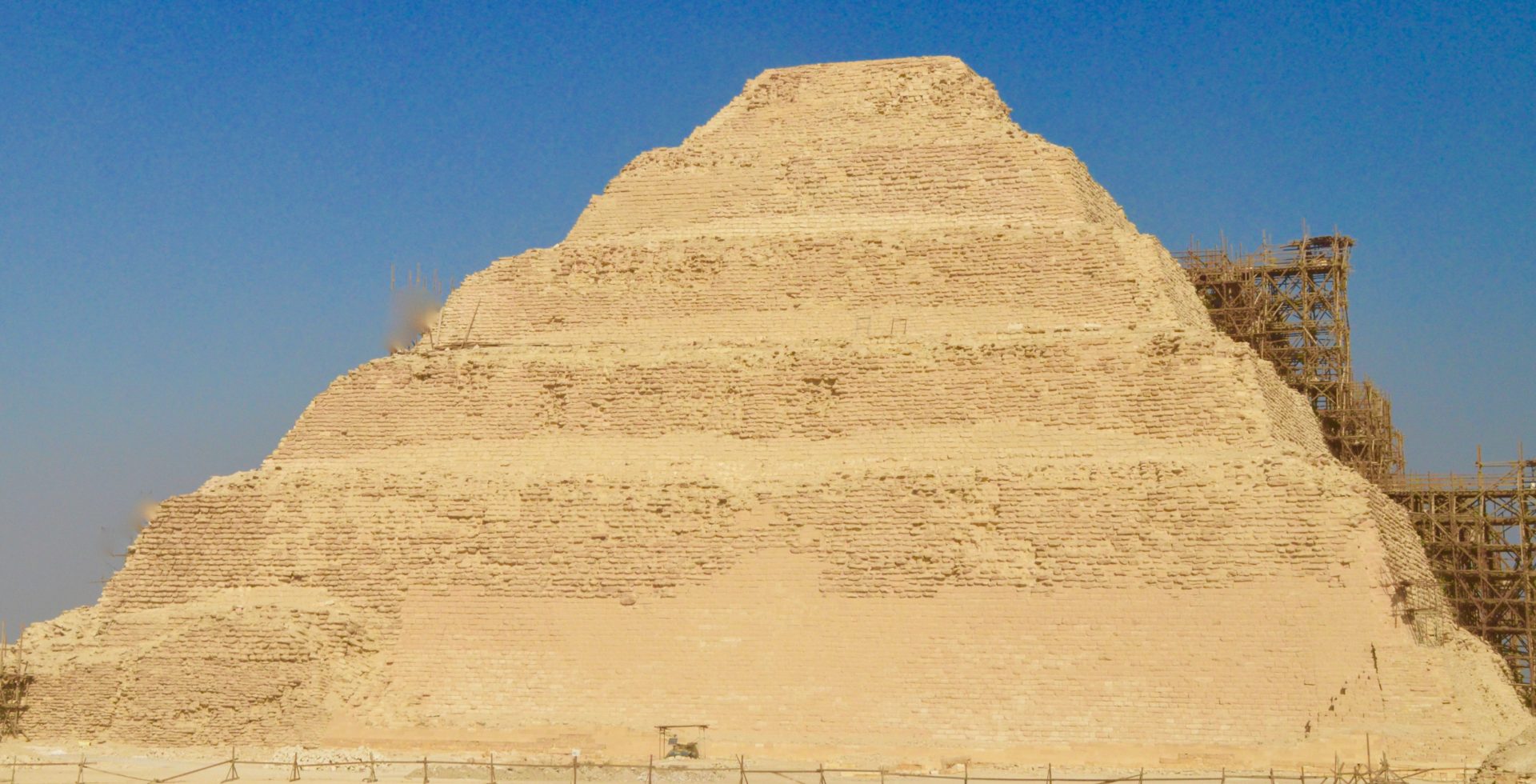
Nearby is this seeming pile of rubble which is the Pyramid of Titi which, despite its appearance, has an intact inner chamber complete with giant sarcophagus.
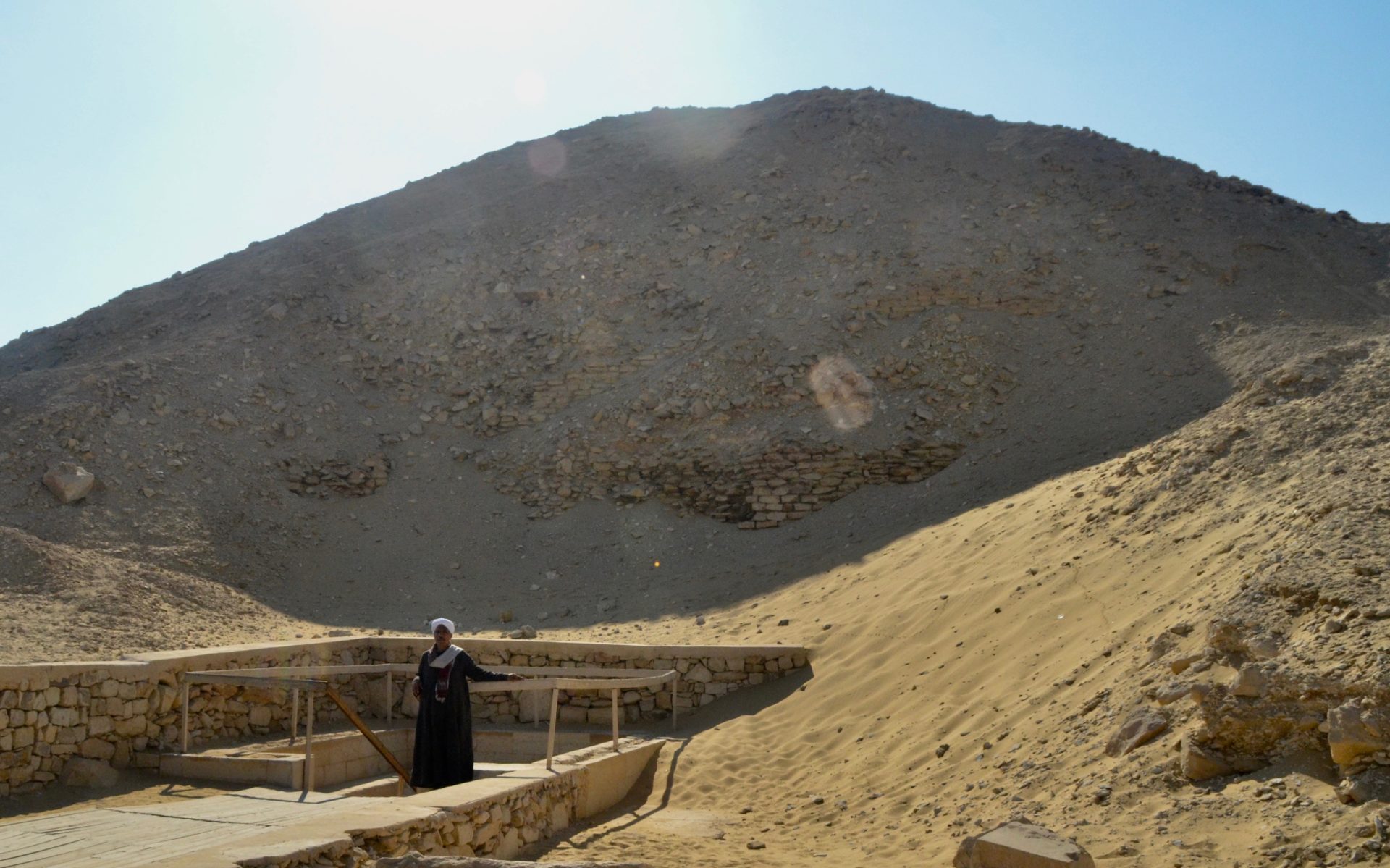
Not far away in Dahshur, down a road that is actually part of a military base, you can find two more pyramids that are almost certainly going to be deserted. You will definitely need a guide to get through the security gate to see these two pyramids, but trust me, it’s worth the effort to see them. The first you come to is the Red Pyramid, but the first in time is a little farther off. This is the Bent Pyramid of Sneferu which was the first attempt to construct a true pyramid. As you can see, it didn’t quite work out, thus the name.
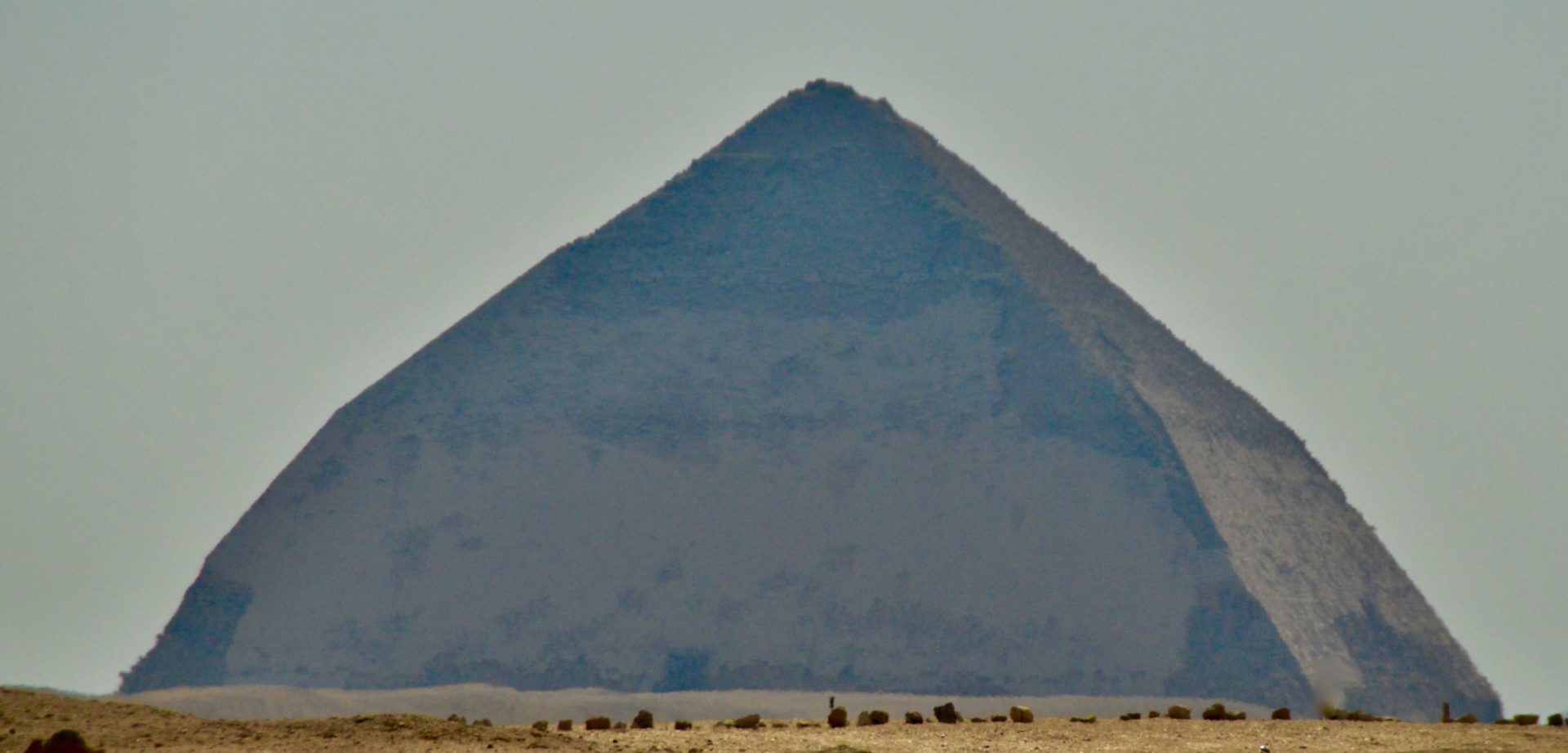
Sneferu got it right the second time around with the Red Pyramid which is the third largest in Egypt and according to many, the most beautiful. It certainly has a reddish tinge that is unique among the pyramids and because you are not surrounded by crowds, it’s magnificent isolation in the desert makes it all the more mysterious.
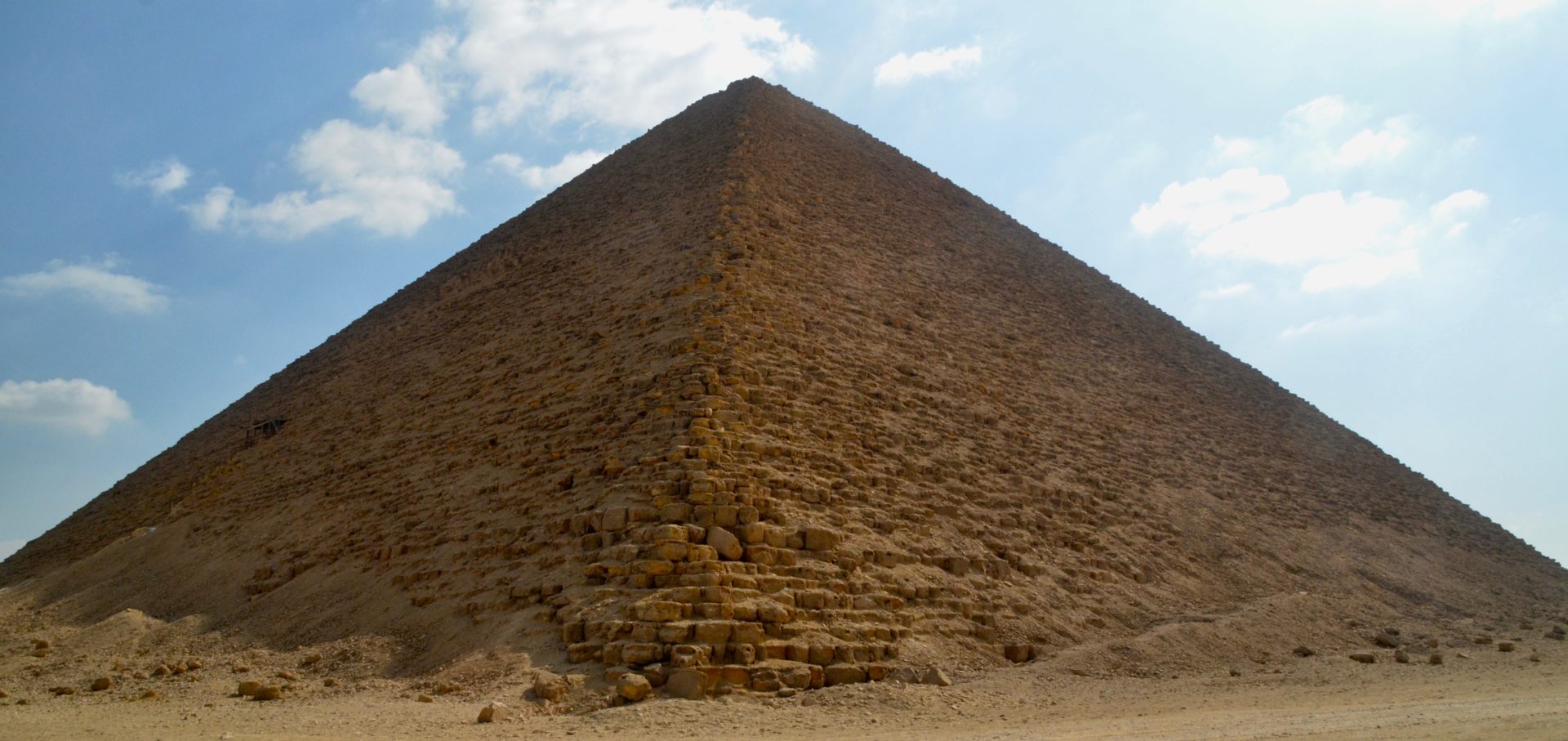
Here is a photo showing the splendid lack of fellow tourists around the Red and Bent Pyramids.
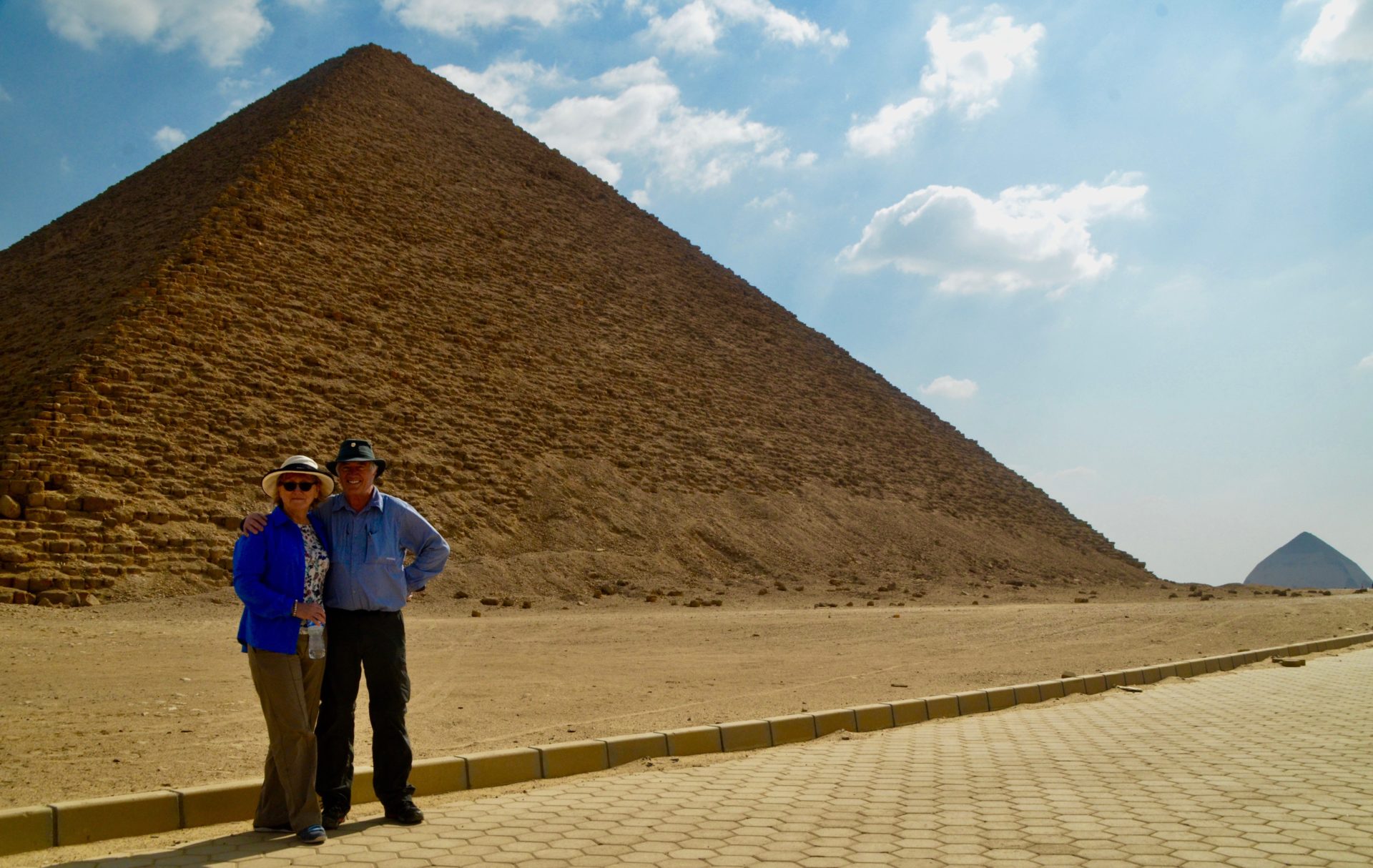
Visiting the Saqqara and Dahshur pyramids and then Giza, means making a day long excursion that can also include a stop at the ancient site of Memphis where there is a massive statue of Ramses II and other interesting sites. For this journey I strongly recommend that you retain the services of Ahmed Mohsin Hashem, very likely the most knowledgable guide in Egypt. Ahmed has a masters degree in archaeology and was taught by the most famous Egyptologist of modern times, Dr. Zahi Hawass. Ahmed still spends time in the field each year at a site on the west bank of the Nile, opposite Luxor. Here he is explaining to our tour group how to interpret a cartouche, which is the tell tale signature of every great Egyptian King, Queen or otherwise important person. He can do this because he can read hieroglyphics!
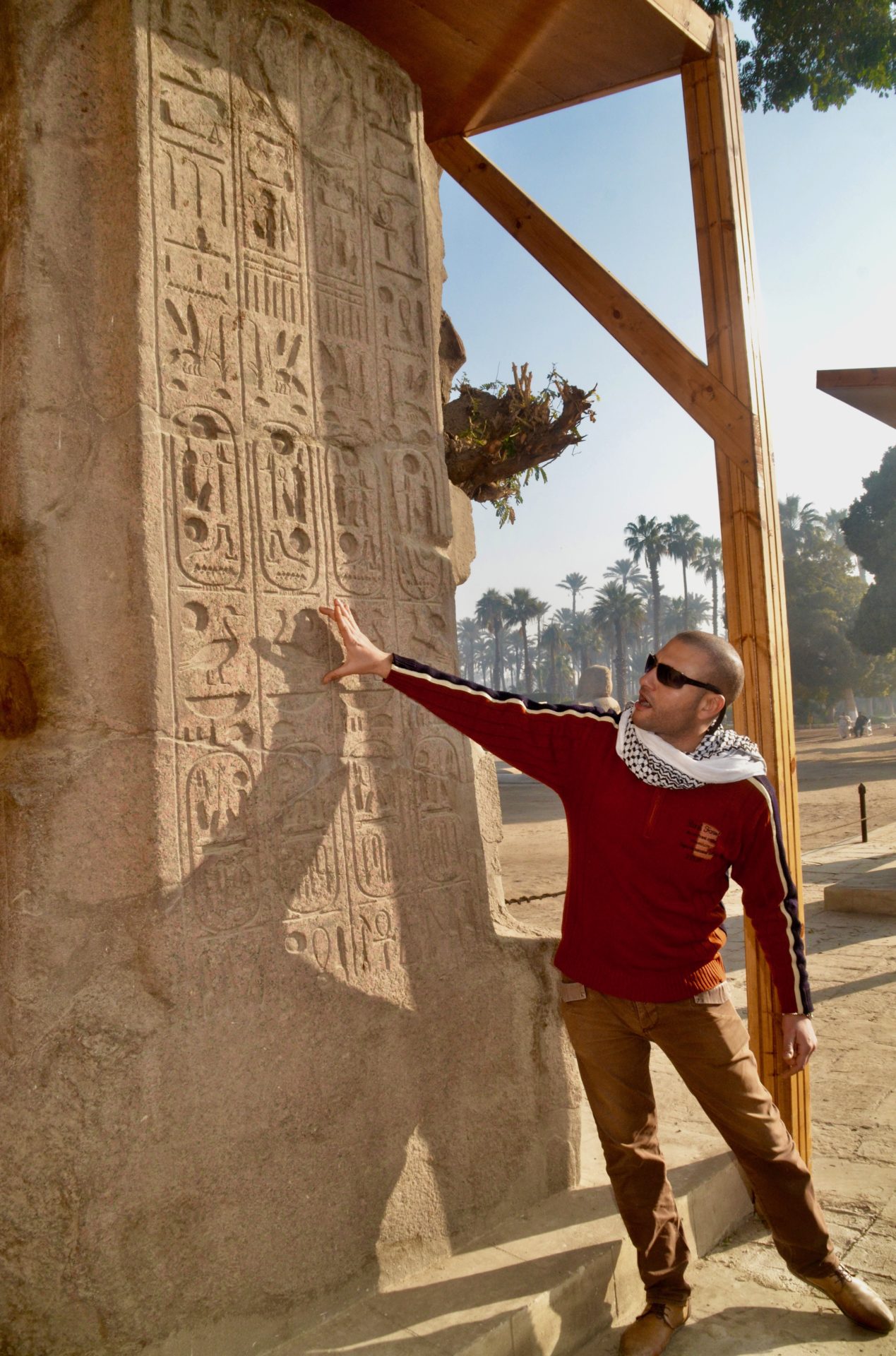
Ahmed was our guide for a two week tour of Egypt with Adventures Abroad and I cannot recommend him highly enough. He can be reached at [email protected].
Visit the Perfume and Papyrus Shops of Giza at Your Peril
Once you have finished your visit to the Pyramids and Sphinx you exit into a crowded street with so-called Perfume and Papyrus “museums” everywhere. These are, of course, shops intent on selling you high priced perfume and/or papyrus parchments. Once you go into one, it is highly unlikely you’ll come out without spending a lot more than you planned upon. That is exactly what happened to my wife and me when she enquired about whether or not the Egyptians still produced glass like they did thousands of years ago. Short answer is they don’t, but we that found out the hard way. Who could resist the charms of the expert perfume salesman, plying us with hibiscus tea and aromas of ancient Egypt? Not us.
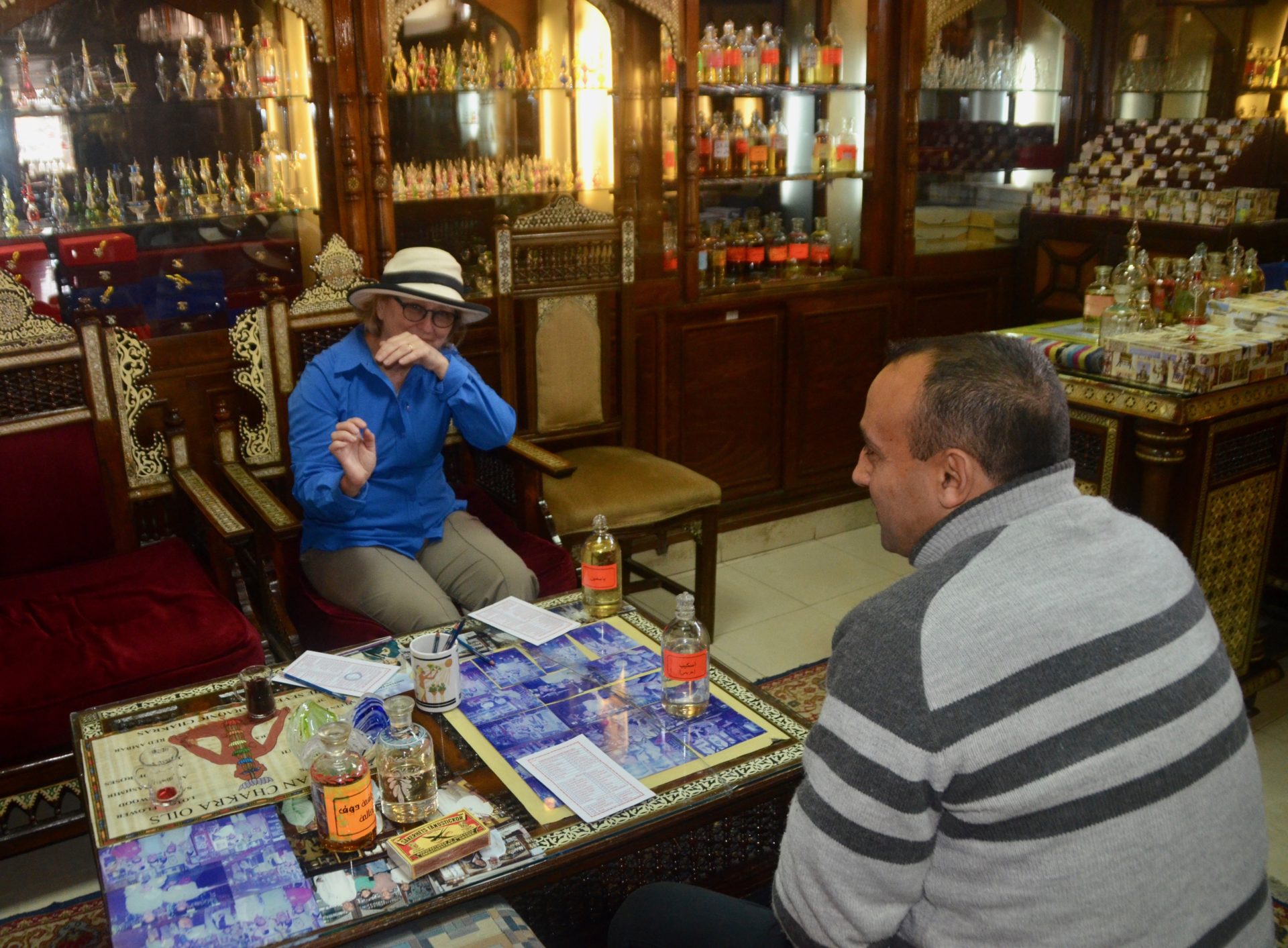
I’m not saying it was a ripoff – I really have no idea what these perfumes are worth. This particular enterprise had photos of many famous customers including the Zimbabwean tyrant Robert Mugabe. Who would dare try to scam him? Just saying, you and your American dollars will be soon become strangers.
So these are my tips for enjoying a visit to the Pyramids and Sphinx. Now if only I could persuade you to go. You won’t regret it.
UPDATE
This post was written before the pandemic which has decimated Egyptian tourism even more than it already had been by the events described above. However, with the advent of the Covid-19 vaccines I believe it is only a matter of time before it is safe to travel again and Egypt will be once again a magical place to visit. The Grand Egyptian Museum is scheduled to open in the next year or two and when it does then it will be time for Alison and me to return.
Here is a link to the Egypt photo gallery which contains pics from across the country from Alexandria to Abu Simbel.

